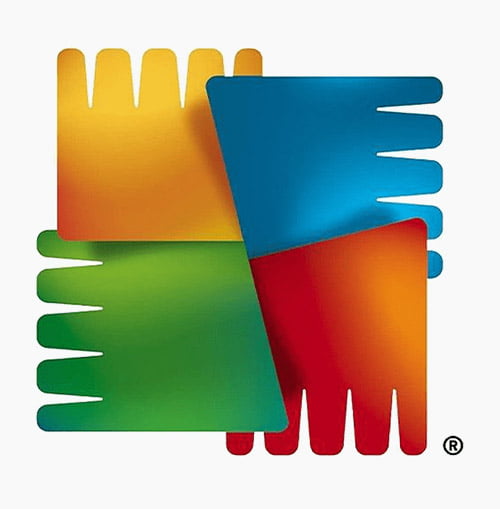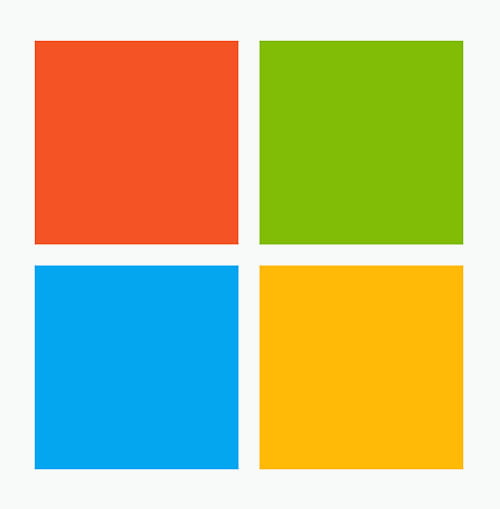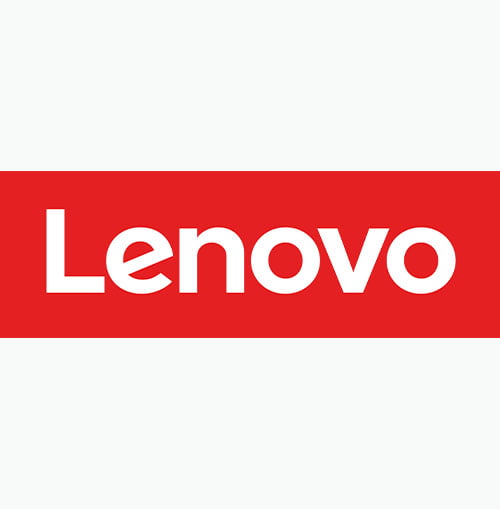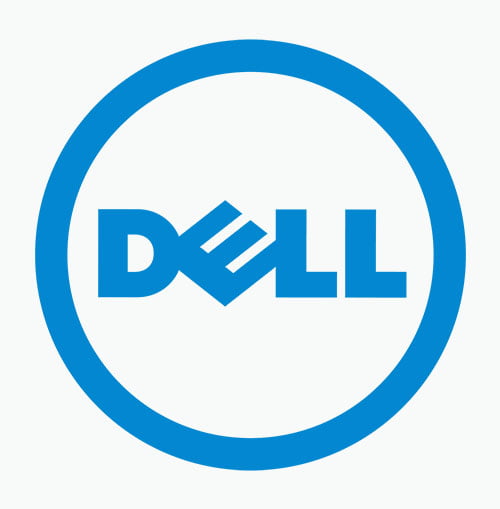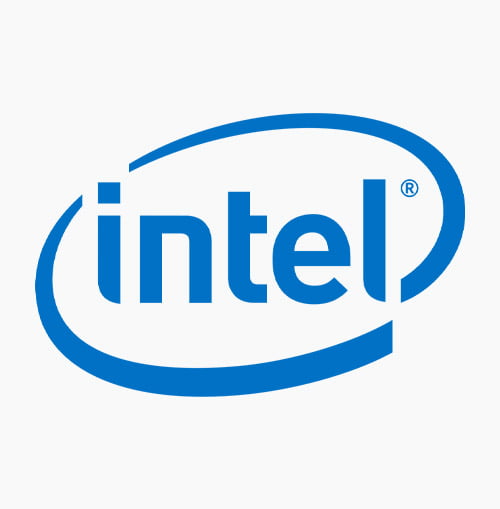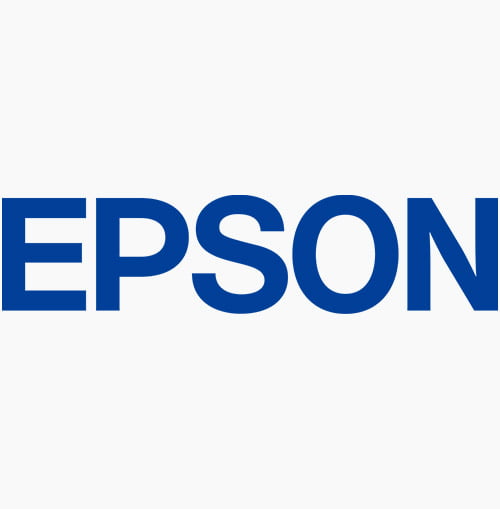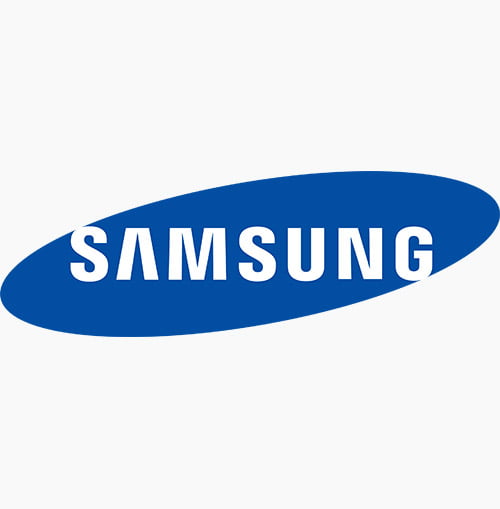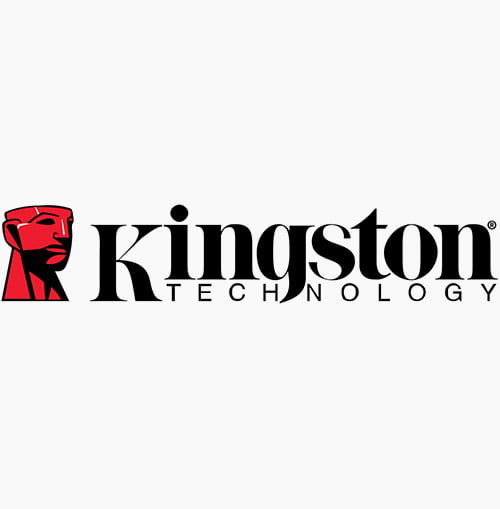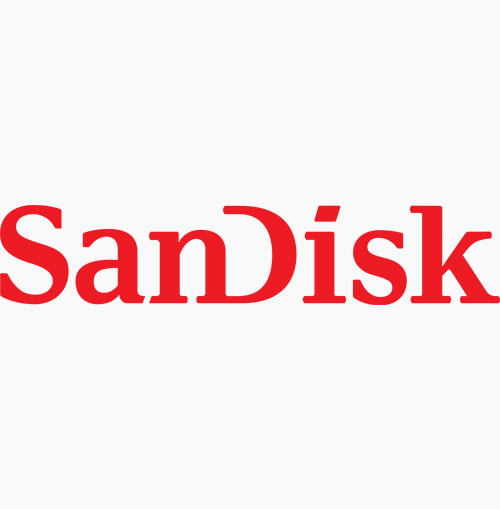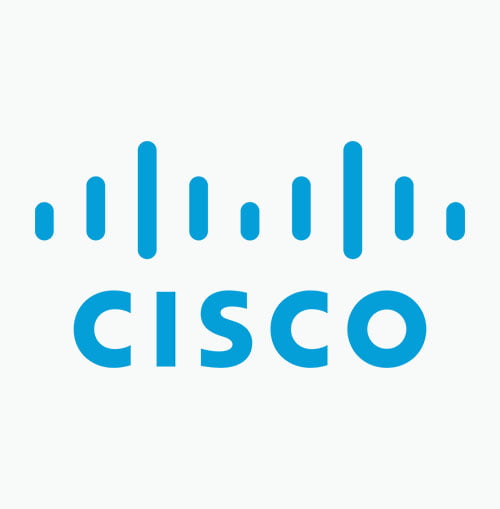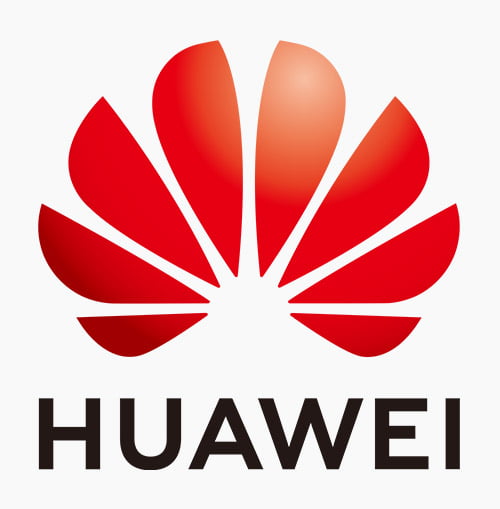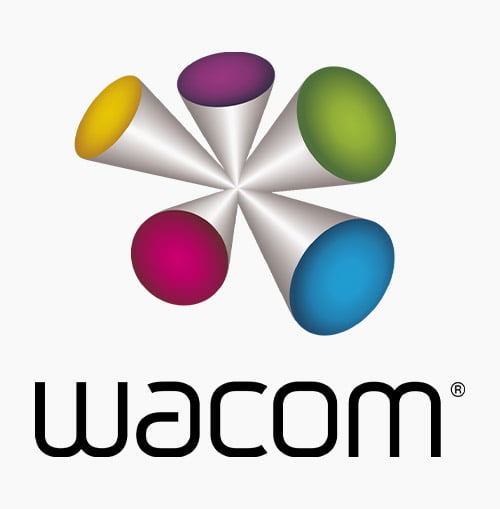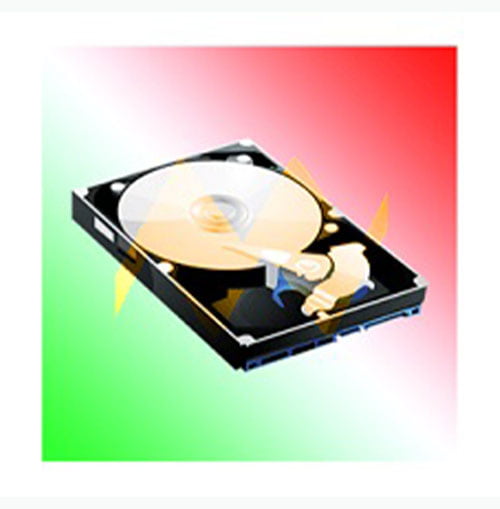Top Best Trusted Computer Networking Services Company in Kampala, Uganda
Welcome to Isazeni Solutions, your trusted partner in the realm of computer networking services! In today’s rapidly evolving digital age, computer networking stands as a vital infrastructure that underpins modern communication and data exchange. From enabling seamless collaboration among teams to providing secure access to critical resources, computer networking has become indispensable for businesses seeking to thrive in the digital landscape.
At Isazeni Solutions, we understand the significance of a reliable and efficient computer network in driving your business’s success. With nearly a decade of expertise in the IT industry, we are proud to offer cutting-edge computer networking services tailored to meet the unique needs of your business. Whether you are a small enterprise or a large corporation, our team of highly skilled and certified professionals is committed to empowering your organization with seamless connectivity, optimal performance, and fortified security.
In this comprehensive guide, we will explore the essential aspects of computer networking, from its significance and benefits to the latest technological advancements shaping its future. Our mission is to provide you with the knowledge and insights you need to make informed decisions that elevate your business in the dynamic world of technology.
Let’s embark on a journey to discover how Isazeni Solutions’ computer networking services can unlock your business’s full potential, maximize efficiency, and drive success in the digital era. Whether you need a new network setup, advanced security solutions, or future-ready innovations like Network as a Service (NaaS), we are dedicated to delivering unmatched quality and customer satisfaction. Experience the power of reliable networking with Isazeni Solutions, and let us be your gateway to a connected and thriving digital future.
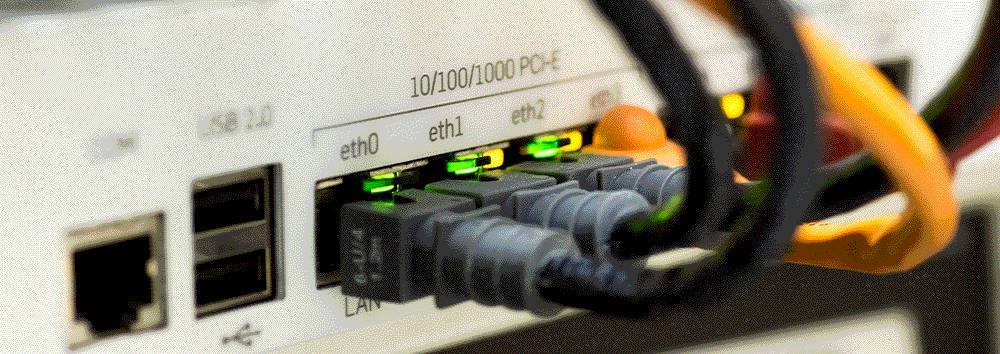
Discover the top best-trusted computer networking services companies in Kampala, Uganda. Explore the importance of computer networking, types of networks, printer networking, technology advancements, and future outlook. Isazeni Solutions offers cutting-edge networking services tailored to empower your business in the digital age.
Introduction to Computer Networking and Its Importance:
In the rapidly evolving digital age, computer networking has emerged as a vital infrastructure that underpins modern communication and data exchange. At the heart of this technology lies the seamless interconnection of multiple devices, systems, and users, enabling them to collaborate, share resources, and access information with unprecedented ease. From local area networks (LANs) in homes and offices to vast wide area networks (WANs) spanning continents, computer networking has become an indispensable aspect of our daily lives, transforming the way we interact, work, and conduct business.
Importance of Computer Networking:
1. Efficient Communication:
The foremost importance of computer networking lies in its ability to facilitate efficient communication. Through emails, instant messaging, video conferencing, and real-time collaboration tools, networking enables swift and seamless information exchange, breaking down communication barriers and enhancing productivity.
2. Resource Sharing:
Computer networks enable the sharing of hardware resources, such as printers, scanners, and storage devices, as well as software applications. This optimizes resource utilization, reduces redundancy, and minimizes costs for both individuals and organizations.
3. Data Transfer and Accessibility:
Networking empowers the rapid and secure transfer of data between connected devices. It ensures that critical information is readily accessible to authorized users when and where they need it, promoting informed decision-making and streamlined workflows.
4. Centralized Data Management:
With computer networking, organizations can adopt centralized data management strategies. Centralized data storage facilitates efficient data backups, streamlined disaster recovery, and robust data security measures to safeguard sensitive information.
5. Remote Access:
The ability to access files and applications remotely is one of the key advantages of computer networks. This capability fosters flexible work arrangements, such as remote work and telecommuting, leading to increased productivity and work-life balance.
6. Collaboration and Teamwork:
Networking fosters collaboration among team members, regardless of their physical locations. Virtual collaboration platforms, shared documents, and real-time communication tools empower teams to work together seamlessly on projects, share ideas, and brainstorm innovative solutions.
7. Internet Connectivity:
Computer networks provide seamless access to the internet, connecting individuals and organizations to a vast repository of information, online services, and global knowledge. This connectivity has transformed the way we learn, research, and access services.
8. E-commerce and Online Business:
Networking has revolutionized commerce by giving rise to e-commerce platforms and online marketplaces. Businesses can now reach a global audience, conduct online transactions, and offer personalized customer experiences through computer networks.
9. Innovation and Research:
Networking plays a pivotal role in promoting innovation and research collaboration. It facilitates global cooperation among researchers and scientists, accelerating the pace of discovery and advancing various fields of knowledge.
10. Cloud Computing and Virtualization:
The growth of cloud computing and virtualization owes much to computer networking. Networks form the foundation of cloud-based services, enabling scalable, flexible, and on-demand access to computing resources, applications, and storage.
Isazeni Solutions: Empowering Your Business with Comprehensive Computer Networking Services
In the fast-paced digital landscape, a reliable and efficient computer network is the backbone of any successful business. Isazeni Solutions, a trusted leader in the IT industry for nearly a decade, offers cutting-edge computer networking services tailored to meet the unique needs of your business. From network design and implementation to security and ongoing support, we are committed to empowering your organization with seamless connectivity and optimal performance.
Key Components of Our Computer Network Services:
1. Comprehensive Network Assessment:
We begin by conducting a thorough assessment of your existing network infrastructure. Our team analyzes network performance, identifies bottlenecks, and assesses security vulnerabilities to gain insights into areas that require improvement.
2. Strategic Network Design and Planning:
Building on the assessment results, our expert network engineers create a strategic network design that aligns with your business goals. We consider factors like scalability, future growth, and resource allocation to ensure a robust and flexible network architecture.
3. Efficient Network Implementation:
With meticulous attention to detail, our skilled technicians execute the network implementation plan. We handle the physical setup and configuration of network hardware, including routers, switches, servers, and access points, ensuring a seamless data flow.
4. Advanced Network Security Solutions:
The security of your network is paramount. Isazeni Solutions employs state-of-the-art security solutions, including firewalls, intrusion detection systems (IDS), encryption protocols, and multi-factor authentication, to safeguard your network from cyber threats and unauthorized access.
5. Proactive Network Monitoring and Management:
Our proactive approach to network management ensures that potential issues are detected and addressed before they become major problems. We use advanced monitoring tools to track performance, analyze network traffic, and implement optimizations for smooth operations.
6. Regular Network Maintenance and Upgrades:
To keep your network at peak performance, we provide regular maintenance and upgrades. This includes firmware updates, security patches, and hardware upgrades to ensure your network remains secure and up-to-date.
7. 24/7 Network Support and Helpdesk:
Our experienced support team is available 24/7 to address any network-related issues. Whether you encounter technical difficulties or have questions, our dedicated helpdesk is ready to assist, minimizing downtime and ensuring uninterrupted business operations.
8. Scalability and Future-Proofing:
We design your network with scalability in mind, allowing it to grow alongside your business. By incorporating future-proof technologies and flexible architectures, we ensure your network can adapt to emerging business demands.
9. Network Virtualization and Cloud Integration:
Isazeni Solutions leverages network virtualization and cloud integration to optimize resource utilization and enhance network flexibility. These technologies enable seamless migration to cloud-based services and improved management of virtualized environments.
10. Compliance and Data Privacy Assurance:
We adhere to industry standards and regulatory requirements to ensure your network operates in compliance with data privacy laws. Our stringent security measures protect sensitive data, giving you peace of mind.
At Isazeni Solutions, our comprehensive computer network services are designed to empower your business with a reliable, secure, and high-performing network infrastructure. Whether you need a new network setup or want to enhance your existing one, our team is ready to provide customized solutions tailored to your unique business needs. With our expertise and dedication to excellence, we ensure your network remains at the forefront of technology, enabling you to thrive in the digital age.
Discover Our Comprehensive Networking Solutions Today!
Introduction to Network as a Service (NaaS):

In the dynamic world of technology, businesses are continually seeking innovative solutions to streamline their operations, reduce costs, and enhance flexibility. Network as a Service (NaaS) has emerged as a transformative approach that revolutionizes the way organizations approach networking. At Isazeni Solutions, we are proud to offer NaaS as a cutting-edge model that empowers businesses in Kampala, Uganda, and beyond with unparalleled networking capabilities without the burden of traditional network ownership. With NaaS, you can harness the full potential of a robust and scalable network infrastructure while leaving the complexities of management and maintenance to our expert team.
Key Features of NaaS:
1. Scalability and Flexibility:
NaaS empowers your organization to scale network resources based on demand. Whether you experience rapid growth or seasonal fluctuations, NaaS ensures your network adapts effortlessly to your business’s evolving needs.
2. Cost Efficiency and Predictability:
By adopting NaaS, you can say goodbye to hefty upfront investments in network hardware and maintenance costs. Instead, you pay for network services on a subscription basis, providing cost predictability and potential cost savings over time.
3. Simplified Network Management:
With NaaS, we handle the complexities of network management, freeing your IT team from routine tasks. Our experts oversee updates, maintenance, and security, allowing your team to focus on strategic initiatives and core business activities.
4. Rapid Deployment and Time-to-Market:
Embrace agility with NaaS. New network services and features can be swiftly deployed without the delays associated with traditional on-premises implementations, giving you a competitive edge and faster time-to-market.
5. Enhanced Security and Compliance:
Isazeni Solutions places a high emphasis on network security. With NaaS, we implement robust security measures to safeguard your data and communications, ensuring compliance with industry regulations and protecting your organization from cyber threats.
6. Global Connectivity and Remote Access:
NaaS enables seamless connectivity across geographically dispersed locations. With remote access capabilities, your workforce can collaborate and access network resources securely from anywhere, fostering a productive and agile work environment.
7. Scalable Bandwidth Options:
NaaS provides the flexibility to adjust bandwidth according to your requirements. As your data needs to grow or fluctuate, we can easily allocate more bandwidth, ensuring optimal performance without interruption.
8. Redundancy and High Availability:
Our NaaS offering includes redundancy and failover mechanisms to maintain high network availability. This means minimal downtime, increased reliability, and uninterrupted operations for your critical business processes.
9. Performance Monitoring and Reporting:
We continuously monitor the performance of your NaaS environment and provide detailed reports, allowing you to gain insights into network usage, traffic patterns, and application performance.
10. Expert Support and Customer Service:
With NaaS, you gain access to our team of skilled network professionals who are ready to assist you 24/7. We are committed to delivering top-notch customer service and resolving any network issues promptly to ensure your business operates smoothly.
Incorporating Network as a Service from Isazeni Solutions into your business model means embracing a future-ready networking approach that maximizes efficiency, security, and scalability. With our NaaS offering, you can confidently embark on your digital transformation journey, knowing that your network infrastructure is in the hands of experienced experts dedicated to your success. Experience the freedom to innovate and the power to thrive with NaaS from Isazeni Solutions.
At Isazeni Solutions, we recognize the significance of a powerful computer network in driving your business’s success. Through our comprehensive computer networking services, we provide you with the tools and support needed to navigate the digital landscape with confidence. Whether you choose our traditional on-premises network services or opt for the cutting-edge Network as a Service (NaaS) model, we are dedicated to delivering reliable connectivity, optimal performance, and fortified security.
Technology Advancements in Computer Networking:
The field of computer networking has witnessed remarkable technological advancements, driving the evolution of communication and data exchange in the digital age. These advancements have revolutionized the way we connect, collaborate, and conduct business. Some notable technology trends in computer networking include:
1. 5G Integration:
The integration of 5G technology into computer networks promises lightning-fast data transfer speeds and ultra-low latency. This advancement enables real-time applications, and seamless video conferencing, and supports the increasing demands of IoT devices.
2. Internet of Things (IoT) Networking:
The proliferation of IoT devices has led to the development of specialized networks that can handle the massive influx of data generated by these devices. IoT networking offers enhanced connectivity and management of IoT devices, unlocking new possibilities for smart homes, industries, and cities.
3. Software-Defined Networking (SDN):
SDN separates the control plane from the data plane, allowing network administrators to manage network resources programmatically. This dynamic approach to network management improves agility, scalability, and cost-effectiveness.
4. Network Virtualization:
Network virtualization decouples network functions from physical hardware, allowing multiple virtual networks to run on a single physical infrastructure. This technology optimizes resource utilization, reduces costs, and enhances network flexibility.
5. Edge Computing:
Edge computing brings computing resources closer to the source of data and applications. By reducing data transfer to centralized data centres, edge computing improves latency and enhances the performance of applications in IoT, AR/VR, and real-time analytics.
6. AI-Powered Networking:
Artificial Intelligence (AI) and Machine Learning (ML) are being integrated into network management tools to optimize performance, predict network failures, and enhance security. AI-driven insights enable proactive network management and troubleshooting.
7. Wi-Fi 6 (802.11ax):
Wi-Fi 6, the latest wireless standard, delivers higher data rates, increased capacity, and improved performance in congested environments. It enhances user experiences in dense Wi-Fi deployments and supports emerging technologies like IoT and AR.
8. Blockchain for Networking Security:
Blockchain technology is being explored for enhancing network security by providing decentralized and tamper-resistant authentication and authorization mechanisms. It has the potential to mitigate various security risks associated with centralized identity management.
9. Intent-Based Networking (IBN):
Intent-Based Networking automates network configuration and management based on high-level business policies and intentions. This approach simplifies network operations, reduces human errors, and adapts the network to changing requirements.
10. Quantum Networking:
Quantum networking, harnessing the principles of quantum mechanics, is a frontier area of research that holds tremendous potential. It may enable ultra-secure communication and data transfer through quantum key distribution and quantum entanglement.
Future Outlook of Computer Networking:

The future of computer networking holds exciting possibilities, as technology continues to advance and businesses embrace digital transformation. Some key trends and developments that will shape the future of computer networking include:
1. Hyperconnectivity:
The proliferation of connected devices, IoT sensors, and smart technologies will lead to hyperconnectivity, creating an intricate web of interlinked devices and services. This will require robust networking infrastructures to handle the massive volume of data traffic and ensure seamless communication.
2. 5G and Beyond
As 5G technology becomes more widespread, networking capabilities will further expand, enabling innovative applications like augmented reality, virtual reality, and remote medical services. Beyond 5G, research and development in 6G and beyond will unlock even more possibilities for communication and connectivity.
3. Secure and Privacy-Focused Networks:
With the increasing frequency of cyber threats and data breaches, there will be a growing emphasis on secure networking solutions. Network security will evolve to protect against sophisticated attacks, while privacy-focused networking protocols will safeguard user data.
4. Edge and Fog Computing:
Edge and fog computing will continue to gain prominence as businesses seek to reduce latency and optimize data processing in real-time applications. These distributed computing models will complement cloud services, catering to the needs of latency-sensitive and data-intensive applications.
5. Network Automation:
The integration of AI and ML into networking will drive greater automation, simplifying network management, configuration, and troubleshooting. Automated networks will adapt to changing conditions and demands, enabling IT teams to focus on strategic initiatives.
6. Quantum Networking:
Quantum networking, harnessing the principles of quantum mechanics, is a frontier area of research that holds tremendous potential. It may enable ultra-secure communication and data transfer through quantum key distribution and quantum entanglement.
7. Green Networking:
Energy efficiency and sustainability will be crucial considerations in future networking solutions. Green networking practices, such as optimizing data centres and adopting energy-efficient hardware, will reduce the carbon footprint of network infrastructures.
8. Convergence of Technologies:
Networking will converge with other transformative technologies, such as Artificial Intelligence of Things (AIoT) and blockchain. These combinations will give rise to innovative applications and new business models.
9. Internet Expansion and Connectivity for All:
Efforts to expand internet access to underserved regions and bridge the digital divide will continue to be a global priority. Initiatives like satellite-based internet and community networks will strive to ensure connectivity for all.
10. 5G-Enabled IoT and Smart Cities:
The synergy between 5G and IoT will unlock the full potential of smart cities, where interconnected devices, sensors, and infrastructure optimize urban living and resource management.
In conclusion, the future of computer networking is filled with exciting advancements that will reshape the way we connect, collaborate, and access information. The convergence of cutting-edge technologies and the pursuit of a more connected and efficient world will drive networking innovations. At Isazeni Solutions, we are committed to staying at the forefront of these developments, empowering businesses in Kampala, Uganda, and beyond with state-of-the-art networking solutions. By embracing emerging technologies and adopting a forward-thinking approach, we strive to create future-ready network infrastructures that elevate businesses to new heights in the dynamic world of technology.
Secure Your Network with Advanced Solutions.
Types of Computer Networks:
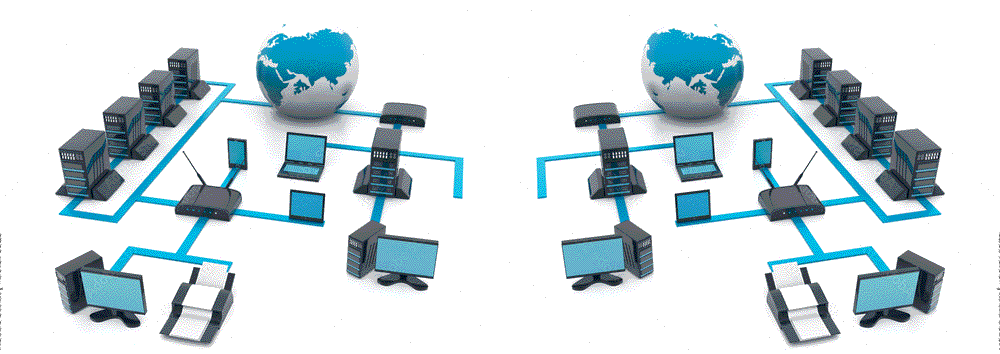
Discover the top best-trusted computer networking services companies in Kampala, Uganda. Explore the importance of computer networking, types of networks, printer networking, technology advancements, and future outlook. Isazeni Solutions offers cutting-edge networking services tailored to empower your business in the digital age.
Computer networks can be classified based on their geographic coverage and the number of devices connected. Some common types of computer networks include:
1. Local Area Network (LAN):
A LAN is a network that covers a small geographical area, such as a home, office building, or campus. It allows devices in close proximity to share resources like files, printers, and internet connections. LANs are often used for internal communication within an organization.
2. Wide Area Network (WAN):
A WAN is a network that spans large distances, connecting multiple LANs and other networks across cities, countries, or continents. The internet is the most well-known example of a wide area network. WANs enable long-distance communication and data exchange.
3. Metropolitan Area Network (MAN):
A MAN covers a larger area than a LAN but smaller than a WAN. It typically spans a city or a large campus. MANs provide high-speed connectivity to a specific region and are often used by educational institutions or municipal organizations.
4. Wireless Local Area Network (WLAN):
A WLAN is a type of LAN that uses wireless technology, such as Wi-Fi, to connect devices within a limited area. WLANs are prevalent in homes, offices, airports, and cafes, providing users with flexible and convenient access to the network.
5. Campus Area Network (CAN):
A CAN is a network that connects multiple LANs within a university campus, business park, or large institution. It allows seamless communication and resource sharing across different departments or buildings.
6. Storage Area Network (SAN):
A SAN is a specialized network that provides high-speed access to shared storage devices, such as disk arrays and tape libraries. SANs are commonly used in data centres to improve storage management and performance.
7. Virtual Private Network (VPN):
A VPN extends a private network across a public network, such as the Internet, to enable secure remote access to network resources. It encrypts data to ensure confidentiality and privacy.
8. Intranet:
An intranet is a private network that functions similarly to the internet but is limited to an organization’s internal users. It facilitates information sharing, collaboration, and access to internal systems and databases.
9. Extranet:
An extranet allows authorized external users, such as partners, suppliers, or customers, to access certain parts of an organization’s intranet. It enables secure collaboration and data exchange with trusted external entities.
10. Client-Server Network:
In a client-server network model, one or more central servers provide services to multiple client devices. Clients request resources or services from the server, which processes and delivers the requested data.
Printers & Computer Networking:

Discover the top best-trusted computer networking services companies in Kampala, Uganda. Explore the importance of computer networking, types of networks, printer networking, technology advancements, and future outlook. Isazeni Solutions offers cutting-edge networking services tailored to empower your business in the digital age.
In addition to connecting computers and other devices, computer networks also play a crucial role in printer networking. Printer networking enables multiple users to share printers and access printing resources over the network. Some key aspects of printer networking include:
1. Network Printers:
Network printers are printers that have built-in network interfaces, allowing them to connect directly to the network. These printers can be accessed by multiple users without the need for direct connections to individual computers.
2. Print Servers:
A print server is a dedicated device or software that manages print jobs and handles printer-related tasks on the network. It acts as an intermediary between users’ computers and network printers, ensuring efficient printing operations.
3. Printer Sharing:
Printer sharing allows a printer connected to one computer to be accessible by other computers on the same network. It eliminates the need for each computer to have a dedicated printer, reducing costs and improving resource utilization.
4. Print Queues:
In printer networking, print queues are used to manage print jobs submitted by users. Print queues prioritize and schedule print jobs to ensure fair usage of printer resources and optimize printing efficiency.
5. Mobile Printing:
With printer networking, users can often print from their mobile devices (smartphones, tablets) to network printers, making it convenient for users on the go.
6. Cloud Printing:
Cloud printing allows users to send print jobs to network printers from virtually anywhere with internet access. It eliminates the need for direct network connections and enables remote printing.
7. Print Management Software:
Print management software helps organizations monitor and control printing activities on the network. It provides features like print job tracking, cost allocation, and security settings.
8. Security in Printer Networking:
Printer networking also involves implementing security measures to protect sensitive data and prevent unauthorized access to printers and print jobs.
9. Network Printer Configuration:
Setting up network printers involves configuring IP addresses, printer drivers, and access permissions to ensure smooth and secure printing operations.
10. Centralized Printer Management:
Printer networking allows centralized management of network printers, making it easier to monitor printer status, perform maintenance tasks, and deploy updates from a central location.
Experience the Future of Networking.
Why Choose Isazeni Solutions for Your Computer Networking Needs?
1. Expertise:
With nearly a decade of experience in the industry, Isazeni Solutions boasts a team of highly skilled and certified professionals who are adept at handling complex networking challenges.
2. Customization:
We understand that each business is unique, and we tailor our network solutions to fit your specific requirements, ensuring maximum efficiency and productivity.
3. Security-First Approach:
Our robust security measures protect your network and sensitive data from cyber threats, giving you peace of mind and minimizing the risk of data breaches.
4. 24/7 Support:
We offer round-the-clock support to address any network issues promptly, ensuring minimal downtime and uninterrupted business operations.
5. Scalability and Future-Readiness:
Our network solutions are designed to scale with your business’s growth and embrace emerging technologies, keeping you future-ready in the ever-evolving digital landscape.
6. Cost-Effectiveness:
With flexible pricing models and NaaS options, we help you optimize your network budget without compromising on performance and security.
7. Seamless Integration:
Isazeni Solutions ensures smooth integration of our network services into your existing IT infrastructure, avoiding disruptions and simplifying the adoption process.
8. Strategic Partnerships:
As an established IT service provider, we have cultivated strategic partnerships with leading technology vendors, enabling us to deliver cutting-edge solutions that drive innovation and efficiency.
9. Proactive Monitoring and Maintenance:
We proactively monitor your network’s health and performance, identifying potential issues before they escalate, and performing regular maintenance to keep your network running at its best.
10. Customer-Centric Approach:
Our focus is on understanding your business objectives and aligning our network solutions to support your long-term goals. We prioritize customer satisfaction and strive to exceed your expectations in every engagement.
In conclusion, computer networking stands as an indispensable pillar of modern society. Its significance in facilitating efficient communication, resource sharing, data accessibility, and collaboration cannot be overstated. From empowering individuals to enabling businesses to thrive in the digital landscape, computer networking continues to shape our world in ways previously unimaginable.
As technology advances and networks become more sophisticated, we can anticipate further transformation and innovation in various domains, reinforcing the indispensability of computer networking in our daily lives.
Let Isazeni Solutions be your trusted partner in creating a robust and future-ready network infrastructure that empowers your business to thrive in the dynamic world of technology. Contact us today to explore how we can elevate your network performance and take your business to new heights.
Transform Your Business with Our Cutting-Edge Networking Services.
Frequently Asked Questions (FAQs) about Computer Networking.
1. What is a computer network?
A computer network is a collection of interconnected devices (such as computers, printers, servers, and routers) that can communicate and share resources with each other.
2. Why do we need computer networks?
Computer networks enable efficient communication, resource sharing, data transfer, and collaboration among devices and users, enhancing productivity and connectivity.
3. What are the types of computer networks?
Computer networks can be classified into various types, including LAN (Local Area Network), WAN (Wide Area Network), WLAN (Wireless Local Area Network), and MAN (Metropolitan Area Network).
4. How does a LAN work?
A LAN is a network of devices located in a small geographical area, such as a home or office. Devices in a LAN can communicate directly with each other through wired or wireless connections.
5. What is the internet?
The Internet is a global network of interconnected networks that allows users to access a vast repository of information, services, and resources worldwide.
6. How does data travel over the internet?
Data travels over the internet in the form of packets. These packets are routed through various devices (routers) until they reach their destination.
7. What is a router?
A router is a networking device that forwards data packets between different networks. It acts as an intersection point for data traffic.
8. What is Wi-Fi?
Wi-Fi is a wireless networking technology that allows devices to connect to a network without the need for physical cables.
9. What is Ethernet?
Ethernet is a standard for wired LAN connections. It uses twisted-pair or fibre optic cables to transmit data between devices.
10. What is a server?
A server is a powerful computer that provides services or resources to other devices on the network, such as file storage or website hosting.
11. What is cloud computing?
Cloud computing is a model where resources and services are accessed over the internet, rather than locally on a user’s device.
12. What is VoIP?
VoIP (Voice over Internet Protocol) is a technology that allows voice calls to be transmitted over the Internet instead of traditional phone lines.
13. What is a firewall?
A firewall is a security device that monitors and controls incoming and outgoing network traffic, protecting the network from unauthorized access and threats.
14. How is network security ensured?
Network security is ensured through various measures, such as using firewalls, encryption, strong passwords, and regular security updates.
15. What is a VPN (Virtual Private Network)?
A VPN is a secure connection that allows users to access a private network over a public network, ensuring data privacy and security.
16. What is network latency?
Network latency is the delay in data transmission between devices over a network, which can affect communication speed and responsiveness.
17. What are IP addresses?
IP addresses are unique numerical labels assigned to devices on a network, allowing them to be identified and communicate with each other.
18. What is DNS (Domain Name System)?
DNS is a system that translates human-readable domain names (e.g., www.example.com) into IP addresses, enabling users to access websites.
19. What is bandwidth?
Bandwidth refers to the maximum amount of data that can be transmitted over a network in a given time, often measured in bits per second (bps).
20. What is network congestion?
Network congestion occurs when the volume of data traffic exceeds the network’s capacity, leading to slower data transmission and potential bottlenecks.
21. What are network protocols?
Network protocols are rules and conventions that govern data communication between devices on a network, ensuring standardized communication.
22. What is a modem?
A modem is a device that modulates and demodulates digital signals to allow computers to connect to the internet over telephone or cable lines.
23. What is bandwidth throttling?
Bandwidth throttling is the intentional slowing down of internet speeds by internet service providers (ISPs) to manage network traffic.
24. What is a MAC address?
A MAC (Media Access Control) address is a unique identifier assigned to the network interface of a device, used to identify it on a LAN.
25. What is network topology?
Network topology refers to the arrangement of devices and connections in a network, such as bus, star, ring, or mesh topology.
26. What is a subnet mask?
A subnet mask is a numerical code that determines the network and host portions of an IP address, helping with routing and identification.
27. What is network redundancy?
Network redundancy involves setting up duplicate network components to ensure reliability and minimize downtime in case of failures.
28. What is a network switch?
A network switch is a networking device that connects devices on a LAN and forwards data only to the intended recipient, increasing network efficiency.
29. What is a network gateway?
A network gateway is a device that connects two different networks, allowing them to communicate and share data.
30. What is a network bridge?
A network bridge is a device that connects two segments of a LAN, allowing them to behave as a single network.
31. What is a proxy server?
A proxy server acts as an intermediary between a user’s device and the internet, providing anonymity and caching content for faster access.
32. What are network standards?
Network standards define the rules and protocols that ensure compatibility and interoperability between different networking devices and technologies.
33. What is a network interface card (NIC)?
A network interface card is a hardware component that allows a device to connect to a network by providing a physical connection point.
34. What is a network cable?
A network cable is a medium used to transmit data between devices in a wired network, such as Ethernet cables or fibre optic cables.
35. What is network segmentation?
Network segmentation involves dividing a large network into smaller, isolated segments to enhance security and manage traffic efficiently.
36. What is a network bridge?
A network bridge is a device that connects two segments of a LAN, allowing them to behave as a single network.
37. What is a network-attached storage (NAS)?
NAS is a storage device connected to a network, allowing multiple devices to access and share files and data.
38. What is a network gateway?
A network gateway is a device that connects two different networks, allowing them to communicate and share data.
39. What is network infrastructure?
Network infrastructure refers to the hardware, software, and protocols that make up a network and enable its functioning.
40. What is a network administrator?
A network administrator is a professional responsible for managing and maintaining a computer network.
41. What is a network load balancer?
A network load balancer distributes incoming network traffic across multiple servers to optimize resource utilization and prevent overload.
42. What is a network simulator?
A network simulator is a software application that emulates a real network environment for testing and experimentation.
43. What is network monitoring?
Network monitoring involves continuously observing network performance and status to identify and resolve issues proactively.
44. What is a network packet?
A network packet is a unit of data that is transmitted over a network, containing both the payload (data) and header (control information).
45. What is a network domain?
A network domain is a group of devices in a network that shares the same security policies and administrative settings.
46. What is network virtualization?
Network virtualization allows the creation of virtual networks within a physical network infrastructure, providing isolation and flexibility.
47. What is network convergence?
Network convergence is the integration of various communication services, such as voice, video, and data, into a single network.
48. What is a network administrator?
A network administrator is a professional responsible for managing and maintaining a computer network.
49. What is network segmentation?
Network segmentation involves dividing a large network into smaller, isolated segments to enhance security and manage traffic efficiently.
50. What is a network bridge?
A network bridge is a device that connects two segments of a LAN, allowing them to behave as a single network.
51. What is SD-WAN (Software-Defined Wide Area Network)?
52. What is IPv6?
53. What is a data center?
54. What is network automation?
55. What is a hybrid network?
56. What is Zero Trust Security?
57. What is a network protocol analyzer?
58. What is Quality of Service (QoS)?
59. What is a content delivery network (CDN)?
60. What is a DDoS attack?
61. What is a managed network service?
62. What is a network service level agreement (SLA)?
63. What is a port?
64. What is an IPsec VPN?
65. What is a VLAN (Virtual Local Area Network)?
66. What is a public IP address?
67. What is a private IP address?
68. What is a load balancer?
69. What is a DNS server?
70. What is a switch in networking?
71. What is a router table?
72. What is the OSI model?
73. What is a network interface?
74. What is IP address allocation?
75. What is network throughput?
76. What is network jitter?
77. What is the difference between a hub and a switch?
78. What is NAT (Network Address Translation)?
79. What is a network adapter?
80. What is a wireless access point (WAP)?
81. What is a demilitarized zone (DMZ) in networking?
82. What is network failover?
83. What is network provisioning?
84. What is bandwidth management?
85. What is the role of a network architect?
86. What is network monitoring software?
87. What is an IP address conflict?
88. What is the difference between a bridge and a router?
89. What is a link aggregator?
90. What is network address space?
91. What is a Wi-Fi mesh network?
92. What is a DNS cache?
93. What is the difference between HTTP and HTTPS?
94. What is load balancing in cloud computing?
95. What is data encryption in networking?
96. What is a proxy cache?
97. What is a virtual private cloud (VPC)?
98. What is an IP address range?
99. What is an SSL certificate?
100. What is an active directory?
Transform Your Business with Our Cutting-Edge Networking Services.
TECHNOLOGY PARTNERS WE USE IN WESITES & RELATED SERVICES
For years we have acquired strategic partnerships enabling us to serve you better
Transform Your Business with Our Cutting-Edge Networking Services.


